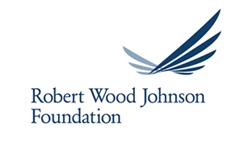The GOP Budget and the majority of state budgets forecast a 99% chance of nationwide disaster. Frantic lobbying is in full throttle trying to revive programs slashed. However, paying lobbyists draws down on already scarce resources needed for the basic work of the organizations at risk.
Philanthropy as a sector must reconsider and reinvent common grant making practices to respond to the impending crisis. And there is a precedent for timely, meaningful, response by the sector.
In the days following Hurricane Katrina, George Penick, (then President of the Foundation for the Mid-South), convened national, regional, and local funders to invest in new and untried ways. That work continues today.
“…until Katrina, I had never thought of safety as a justice issue. But if a society cannot keep all of its people safe regardless of race, class, gender, or geography, then all the other demands for services and programs pale in comparison.” George Penick
For a more complete explanation see: http://www.fndmidsouth.org/sites/default/files/Memphis_Reflection%20memorandum_050915_final.pdf
Today’s looming disaster is also about justice, and the potential destruction of our social, health, and cultural infrastructure.
Philanthropy in the US has always been about innovation. It specializes in trying new and different ways to meet pressing community needs. Countless grants have produced amazing breakthroughs in addressing complex problems.
Meanwhile, the funding to extend and expand proven programs has been the stuff of government support for my lifetime.
That assumption changed on November 9, 2016.
The following seven strategies can help rescue the human and cultural safety net so damaged and frayed by the budgets built on selfishness, political expediency, and divisiveness.
1. Provide new unrestricted funds to new organizations consistent with your mission.
Many grants restrict indirect costs and core support. Change the policy.
2. Increase your core funding to current grantees to keep them operational.
Be in the fight and protect what you created!
3. Revise grants to provide multi-year support (ASAP).
This is a marathon, not a sprint and lives are at stake.
The W.K. Kellogg Foundation’s work in the Mid-South is one example from the Katrina effort proving the value of this strategy. https://www.wkkf.org/what-we-do/mississippi/map
4. Reduce funding of not-for-profits with greater than 50% indirect.
The impact here will be on higher education, they will go on, and have their own battles to fight. This is about those organizations most at risk that don’t have endowments.
5. Fund community-based advocacy groups and efforts to increase awareness of the catastrophic situation.
Advocacy has long been the third rail for philanthropy. The Federal and State budgets are the third rail for 501.c.3s in healthcare, human services, the arts, and education (with a small e). Fight fire with fire.
6. Partner with national, regional and local philanthropies to increase coordination and demonstrate the power of the sector.
Efforts by Robert Wood Johnson Foundation in the Local Funding Partners Program and Partners in Nursing are two examples of the potential for synergies between and among foundations large and small to create and sustain change.
We are in an unprecedented fiscal crisis, not for the 1% (many of whom are involved in philanthropy), but for the 99% who depend on the safety net of government and third sector support for the basics.
Philanthropy is skilled at doing the ‘right’ thing; it never turns away from an opportunity to improve the lives of people in our great nation.
"Courage is more exhilarating than fear and in the long run it is easier. We do not have to become heroes overnight. Just a step at a time, meeting each thing that comes up, seeing it is not as dreadful as it appeared, discovering we have the strength to stare it down.
— Eleanor Roosevelt














